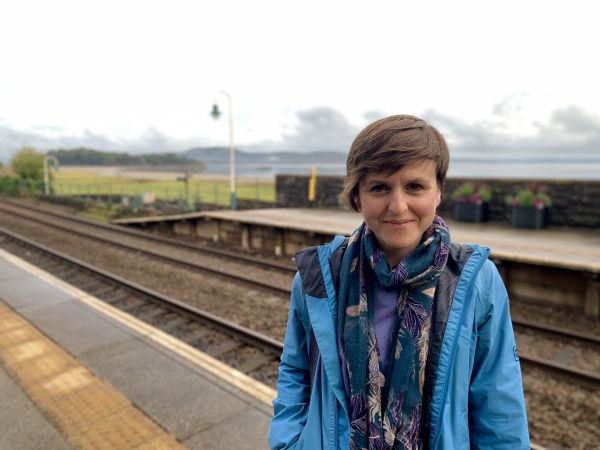We are at a critical juncture with transport, and how we approach the myriad challenges of rebuilding from Covid-19 has far-reaching consequences. People's eyes have been opened to the difference it makes if we have quieter streets, if we walk or cycle more, and if we interact and pull together locally. Opportunities have opened up that we need to seize in transport, to build back better, greener and fairer, and we need to do this in partnership with the communities that transport serves.
Decarbonising transport is a complex, urgent problem: we have about a decade left to turn the corner on emissions to keep global heating under 1.5 degrees, and so far transport hasn't budged. Decarbonising transport in a way that doesn't leave people behind is critical too, and approaching decarbonisation through the inclusion lens can help us deliver wide-ranging co-benefits, to health, wellbeing, equality and prosperity. What we do next in decarbonising UK transport can have global ramifications, too, with the international climate talks heading our way next year, and eyes on our leadership.
So what to do next, from this position of great uncertainty, in which the pandemic's effects continue, on health, wellbeing, economy, and of course transport? The DfT has been exploring this in depth with hundreds of stakeholders through a series of consultation webinars on decarbonisation. I've taken part in four, and been impressed by the genuine commitment to dialogue and listening. We are this week running a special webinar for our community rail members to feed in their experiences. I'm so glad we're able to do this, as the insights offered by community rail – a grassroots network of 71 local/regional partnerships and 1,000 station groups, helping communities get the most from their railways and stations – are invaluable to the decarbonisation challenge, demonstrating how communities can be enabled to lead local change on sustainable, inclusive transport.
Community rail can be seen as a 'nice to have', producing good news and brightening up stations. But look closer and it's clear that community rail can be transformative, and not just of stations: of people's lives and localities. It empowers communities to get involved with their railways, to feel ownership and efficacy (towards rail and one's locality), to use and appreciate rail travel, and to access new opportunities. It helps our rail partners to understand communities and grasp local opportunities. These are all important factors in achieving sustainable development, and our evidence shows it works: in terms of passenger growth, volunteering, wellbeing, service and station improvements, and local regeneration. To take one aspect of community rail, we have countless examples of children and young people who had never been on a train, often nervous about the prospect (well before Covid), and had their horizons opened. Our new report on youth engagement is an inspiring read, if you want to hear more from young people getting involved.
Although much activity has been on hold, our members have been adapting and responding to what communities need, continuing to build a sense of togetherness. As we have been emerging from the travel hiatus, community rail partnerships and groups have been advising rail partners on local needs, and starting to promote rail again. Community rail couldn't be better placed to do this – building positivity and opportunity between the industry and local people is what it's all about – and we're convinced community rail is more vital now than ever.
But community rail's relevance goes beyond encouraging people back to the train, important though that is. Community rail, and community engagement in transport generally, holds a crucial key to building sustainable and inclusive transport future. I don't make that claim lightly. Having studied swathes of academic research on how we can encourage sustainable behaviours, just about everything I've read points towards localised, interactive, empowering approaches, potentially as our best hope. Such approaches go beyond trying to 'persuade' people to change behaviour (which many researchers warn against), and instead work with local people to understand what they need, overcome barriers, and create ownership and efficacy around the change. Community rail experience tallies with this: you don't need to puzzle over behaviour change psychology if the community is driving the improvements that it needs to make sustainable transport work for local people and their future.
The fourth priority in the DfT's Decarbonising Transport report is 'place-based approaches': taking this further, we propose that engaging and empowering communities to create localised improvements can form a foundation for that vital goal of making public transport and active travel natural, habitual and aspirational. As our friends at Bus Users pointed out to me recently, you don't need to read academic tomes to understand this: it's common sense that transport must engage with communities, to develop approaches that work on the ground and safeguard our future. We are proud to work with, represent and champion community partnerships and groups across Britain, and an alliance of national third sector partners, to ensure communities are supported to progress sustainable transport locally, and to advise government and industry. Do let us know how we can work with you.

Jools Townsend is chief executive, at Community Rail Network [communityrail.org.uk]
This blog was published as part of the Decarbonising Transport series with Greener Transport Solutions



